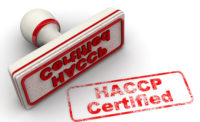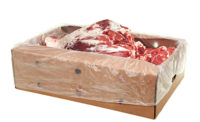Regulations & Legislation
Implementation of FSIS traceback and recall procedures

On Aug. 13, the Food Safety and Inspection Service (FSIS) published a Notice in the Federal Register titled “Implementation of FSIS Traceback and Recall Procedures for Escherichia coli O157:H7 Positive Raw Beef Product.”
According to the notice, the procedures will become effective on Oct. 14. In actuality, FSIS has been applying these traceback and recall procedures since 2012.
In short, the notice provides the procedures and standards FSIS will follow when there has been a positive Shiga toxin-producing E. coli (STEC) sample result, either with FSIS E. coli O157:H7 sampling of raw ground beef or bench trim, or a reliable third-party test (as defined in Directive 10,000.1) for any adulterant STEC in raw, non-intact beef.
Under these procedures, FSIS will review the information obtained at the time of sampling to determine the suppliers of the raw materials used in the positive blend.
If there is a sole supplier to the positive product, FSIS will send an EIAO to the supplier to review production and distribution records on the lot potentially implicated by the positive sample. The EIAOs will gather information as to the use of antimicrobials, prevention of cross contamination and sanitary conditions. In addition, the EIAO will review establishment E. coli O157:H7 sample results (and non-O157 STEC results, if applicable) at the supplying establishment to determine whether there was a high event period (HEP).
In determining whether to request a recall from the supplier of the raw materials, FSIS will ask:
- Whether the supplier was the sole supplier,
- Whether the raw materials supplied were beef trimmings, other raw ground components or ground beef,
- Whether there is evidence to support that contamination did not occur at the grinder, and
- Whether part of the implicated lot was sent to other customers.
If the answer to all four questions is yes, FSIS will request the supplier recall the remainder of the implicated lot.
If there are multiple suppliers, FSIS will send an EIAO to all locations to determine whether any particular supplier had an HEP. If so, based on the HEP and all other information identified by the EIAO, FSIS could request a recall. Even if there is no HEP, all multiple suppliers will be entered into the STEPS database and, if the establishment is identified as being a source in more than one positive within the previous 120 days, FSIS would conduct a food safety assessment at the establishment and conduct a 16-sample follow-up set.
Primals/Sub-Primals
As noted above, one of the questions in determining whether to request a recall from a sole source raw material supplier focuses on the raw materials being supplied. The list above does not include primals or subprimals. For these raw materials, FSIS has recognized that:
“The slaughter establishment did not intend [primal or subprimal product] for use in ground or other non-intact, raw product. Many slaughter establishments maintain information on their web sites or provide information to receiving establishments explaining that this product is not intended for grinding or use in other non-intact, raw product.” — 79 Fed Reg 47420, col 1-2.
Accordingly, if a grinding establishment uses primals/sub-primals as raw material (or a non-slaughter establishment generates trimmings from the primal/sub-primal), FSIS will not typically request a recall of the primals/sub-primals. That said, FSIS nevertheless send an EIAO to the establishment supplying the primals/sub-primals to review the production and testing records. In addition, the supplying establishment will be subject to follow-up testing as a sole supplier.
If, when reviewing the relevant test results, the EIAOs determine the establishment providing the primals/sub-primals had an HEP, FSIS may request a recall of the implicated products if the establishment: (1) was a sole source, (2) co-mingled primal or subprimal cuts and (3) sent some of the same lot of primals/subprimals to additional establishments.
If you are supplying raw materials that could end up in ground (and could end up in a product testing positive for an adulterant STEC), you might wish to review your HEP program to ensure it is supportable and, when applicable for primals/subprimals, convey intended use for intact products only on a Web site or otherwise to potential purchasers.
Looking for a reprint of this article?
From high-res PDFs to custom plaques, order your copy today!







